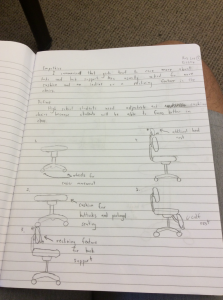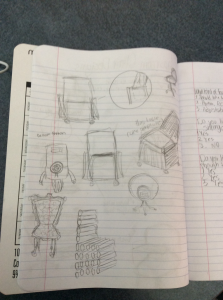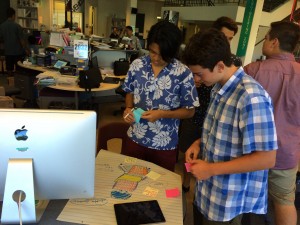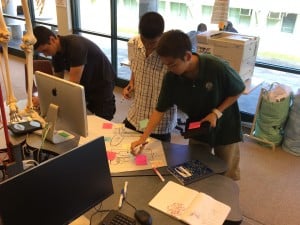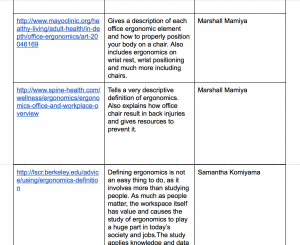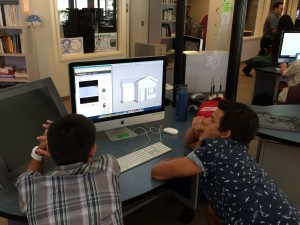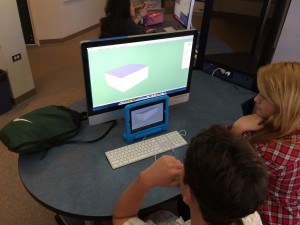Over the past 2 weeks, we have been working on a design challenge on improving student chairs (brief posted last blog).
Learners have looked into empathy by interviewing and observing MPI students in chairs across campus.
From that they have defined the problem more clearly. They have identified a set of design problems to address: hardness of seats, movable writing surface, greater mobility, flexible back rests…just a small sampling…
This past week was spent on the ideation phase – coming up with ideas on the design. The learners first started sketching ideas in their book, then took those ideas and scaled them up for a feedback loop with other members of the class – you can see pictures of this below. This kind of activity really serves two critical functions. First, it provides an opportunity for learners to assess their own thinking about what a quality drawing should have, and what strengths and improvements they can recommend to someone else. It also gives the receiver of this information opportunity to embrace feedback that is both supportive and helpful so that they can improve their own work. This kind of structured class activity builds agency in learners as they learn to see each other as a means to improve their work, and therefore increases the importance of conversation and critical thinking in our class. The next step will involve them editing these drawings to include the feedback and to reflect on the importance of this kind of formative strengthening of their work.
The learners also researched the field of ergonomics. instead of giving them an assigned reading, they created a database of articles, websites, information briefs all of the topic of ergonomics. we did a thinking routine protocol that asked the learners to share their information and come up with 12 deep questions about their reading – we will follow up on Tuesday with time to pick out the most important questions we need to understand as a part of our study.
The other activity we did was to start building the skills around using Sketchup Make. Learners completed a series of tutorials that allowed them to understand the basic ways to use the toolbar in the program, and understand how to build and subtract material and a virtual space. they will actually have a design quiz next week where they need to model a specific object. Last year the group needed to design a coffee cup. This year’s challenge is a surprise!
So, next week we move on to the phase of prototyping after we create a virtual version of their design using Sketchup Make. Once they have a design completed, they will print it in our 3-D printers. Once this completed that, they will build a full-scale model using cardboard. once that’s completed, a judging panel will test their designs and give one more round of feedback.

